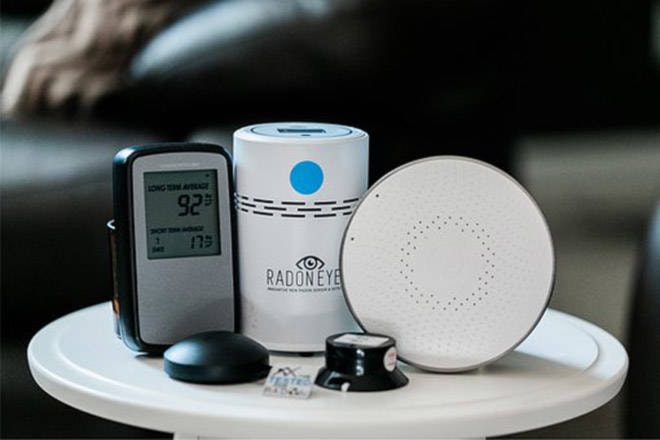Radon gas exposure has faced a 10-year uphill climb to attract the awareness of homeowners.
But as research data begins to accumulate and house mitigation efforts become nationally certified, the emergence of radon gas as the second leading cause of lung cancer after smoking and responsible for the deaths of 3,000 Canadians a year, is finding greater engagement with homeowners.
Pam Warkentin, executive director of the Canadian Association of Radon Scientists and Technologists, said there are several reasons why radon gas has been low on the public cancer-causing awareness level.
One is it tends to get lumped in with smoking, she says.
“People die so quickly from this sometimes it is hard to get their stories out there, and hard to get families who suffer a loss from radon-caused cancer to talk about it,” she said.
“It is lagging in the public consciousness as well I think because of the stigma of smoking as a leading cause of lung cancer.”
To advance the public education effort about radon gas, Warkentin was one of a trio of presenters talking about the issue to the Regional District of Central Okanagan (RDCO) board last week, talking about the Radon Challenge 2021 that will see 300 free radon test kits distributed in Kelowna, Lake Country, West Kelowna and Peachland through the regional district and continuation of a radon screening program for 55 elementary schools in the Central Okanagan, 31 public and private schools having already been tested beginning in 2020.
The other speakers were Noah Quastel, director of law and policy, healthier indoor environments, for the BC Lung Association, and Kelly MacDonald, community health facilitator with Interior Health.
More than 1,200 radon detector kits were made available for free to RDCO residents in 2020.
“People are often afraid of it,” Warkentin said of facing the radon gas reality. “To process, the information about it can be overwhelming…but the greater awareness people have about radon is the way to help reduce it.
“We now know that mitigation systems installed in our homes and reduce it. We know the costs and the research for how it works.”
Radon is a naturally occurring radioactive gas created from uranium decays, present in the ground throughout the world in various concentrations.
It travels upwards from underground and can enter and accumulate in buildings. Radon emits alpha particles that can break DNA bonds, and when breathed in can damage lung tissue.
The health concern is greatest during winter months, when homes are sealed up during the colder winter months, whereas in summer windows are left open and the flow of inside-outside air reduces the stagnation of radon particles inside a structure.
“The air pressure inside a house is greater in winter than in summer, and that draws the radon gas up from underground,” she said.
The first line of response, she says, is to install radon gas detectors for three months and then sent them to a lab.
If the lab results reflect a reading above 200 dequerel units, Health Canada says mitigation efforts are called for, and those test results must be disclosed when a home is put up for sale in B.C.
Not everyone will develop cancer as a result of their radon exposure, but no level of radon gas is considered safe, says a report submitted to the RDCO board by Nancy Mora Castro, regional air quality program coordinator.
Mitigation efforts call for the installation of a fan and pipe system to direct airflow outside of the house. There is a national certification program in place now for mitigation pipe installers, and new homes are built with the pipe system in place, requiring only the fan to be installed and activated in response to high radon gas readings.
“Building codes have been updated in 2012 and again in 2015 for an air passage pipe system to be installed outside of the house. Mitigation makes people nervous but the costs and research no longer make it an unknown factor,” Warkentin said.
To learn more information about how to obtain radon detector kits, check out the website
https://takeactiononradon.ca/test/radon-test-kits/.
READ MORE: Thompson Okanagan potential hot spot for radon gas
READ MORE: Testing finds 38% of Summerland homes have unsafe radon levels
